Imagine harnessing Indiana’s golden sun rays to power your home, slashing monthly utility bills, and contributing to a sustainable future—all purportedly at no cost. The allure of “free” solar panels is enticing, sweeping across the Hoosier State with promises of clean energy and economic salvation. But before visions of a cost-free transition to solar energy dance in your head, it’s crucial to unpack the layers behind this enticing offer.
The term “free solar panels” often catches the eye, but the reality is a tapestry of financing options, incentives, and long-term savings strategies. It’s not as straightforward as receiving a solar system without opening your wallet; rather, it’s about understanding the mechanisms that can make solar energy an affordable and wise investment. As residents of Indiana, where the energy landscape is forever evolving, it’s time to decode the fine print and explore what “free” really means in the context of solar installations.
By continuing to delve into this topic, you’ll be equipped with the knowledge to navigate the solar marketplace confidently. You’ll discover how incentives like net metering, tax credits, and solar leasing programs can significantly reduce the upfront costs of going solar, transforming what might seem “free” today into a tangible, long-term investment for tomorrow. Let’s ignite your journey towards energy independence and financial savviness in the solar-savvy state of Indiana.
Are “Free Solar Panels” Really Free in Indiana?
When you hear the term ‘free solar panels,’ it’s natural to think that someone is offering solar panels at no cost. However, in the solar industry, this phrase typically refers to a financial arrangement known as a solar lease or a Power Purchase Agreement (PPA). Both these options allow you to have solar panels installed on your home without the significant upfront costs associated with purchasing a system outright. But it’s important to understand the nuances of these deals.
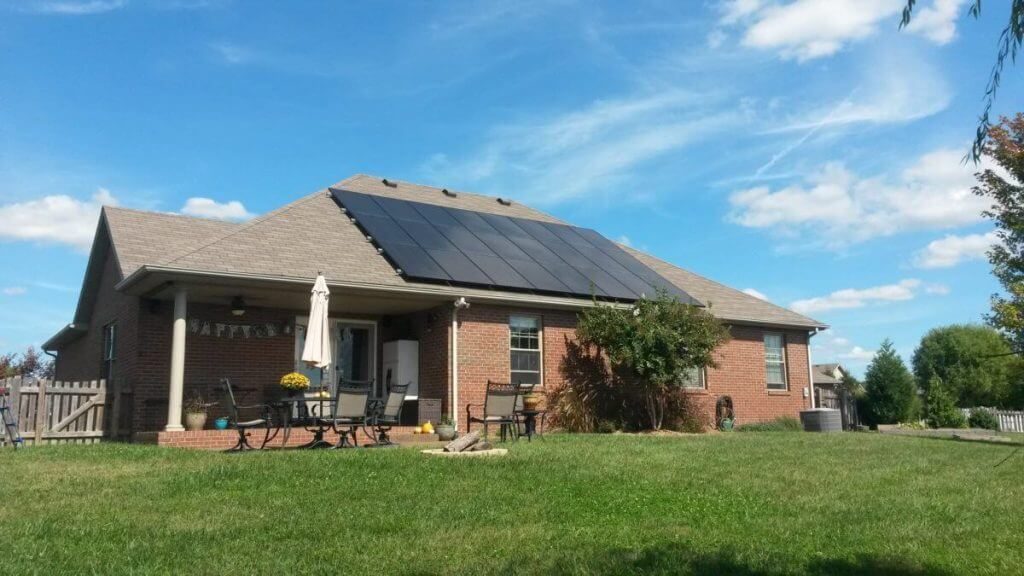
In a solar lease, you agree to pay a fixed monthly rent for the solar panels on your roof. The leasing company owns the equipment, and in exchange for the monthly payment, they usually cover the installation, maintenance, and repairs. While there’s no upfront cost, you are committed to a long-term contract that typically lasts between 15 to 25 years.
Similarly, with a Power Purchase Agreement, a solar company installs panels on your home at no initial cost to you. Instead of paying a fixed monthly rental fee, you purchase the electricity generated by the panels at a set per-kWh rate, which is usually lower than your local utility rates. PPAs also tend to last for about 20 to 25 years.
In Indiana, these leasing options can provide a viable alternative to upfront investment, but it’s crucial to weigh their long-term financial implications against those of buying a solar system. When you lease, you may not be eligible for the same tax credits and incentives that you would be if you purchased the system. Moreover, the monthly payments over time can add up, potentially offsetting some of the electricity bill savings.
If you’re considering solar power for your Indiana home, take the time to compare the various financing options available. While ‘free solar panels’ via a lease or PPA can offer immediate savings with no initial cash outlay, owning your system can lead to greater savings and increased home value over time. It’s all about finding the right fit for your financial situation and energy needs.
What Do Companies Mean When They Refer to Free Solar Panels?
When companies in Indiana tout ‘free solar panels,’ they’re often alluding to solar lease or power purchase agreements (PPAs), which can indeed be compelling for homeowners. Let’s break down what these offers often include:
A solar lease is an arrangement where you lease the solar panels from a company. You pay a fixed monthly rate, which is typically lower than your current electricity bill, for the electricity generated by the panels. The benefit here is immediate savings on your energy costs without the significant upfront investment. However, since you don’t own the panels, you won’t benefit from various incentives like federal tax credits.
Power Purchase Agreements operate on a similar principle. With a PPA, you agree to purchase the electricity generated by the panels installed on your property at a set per-kilowatt-hour rate. This rate is usually lower than what you pay your utility, leading to savings on your energy bill. Again, the installation and maintenance costs are not your responsibility, but this also means missing out on potential rebates and tax incentives.
Another offer might be a solar loan specifically geared towards panel purchase. While not ‘free’ in the upfront sense, these loans can make solar panel ownership financially feasible. They generally come with the advantage that, as the owner, you’re eligible for tax credits, increased home value, and potentially larger long-term savings.
Lastly, the term ‘no upfront cost’ is often used and is particularly appealing. It means you won’t pay when the solar panels are installed, but this doesn’t exempt you from ongoing payments, whether through a lease, PPA, or loan.
Remember, even though the panels could be ‘free’ to install, they’re not free to use. Understanding the fine print and long-term implications of each model is crucial for making a savvy decision. Be sure to consider factors like contract length, what happens if you sell your home, maintenance responsibilities, and how payments might increase over time. Always research and compare offers, and don’t hesitate to consult with a solar energy expert to find the best deal for your needs in Indiana.
Solar Leases
Solar leases are becoming increasingly popular as homeowners in Indiana look for ways to reduce their energy bills and carbon footprints. Understanding how they work is essential to make an informed decision.
Solar leases allow homeowners to have solar panels installed on their property without purchasing the system outright. Instead, you enter into a contract with a solar provider who installs the panels on your roof. You agree to lease the equipment for a set period, often 20 to 25 years.
Here’s a breakdown of the benefits and drawbacks:
Benefits
- No Large Upfront Costs: The solar provider covers the installation and equipment costs. This removes the barrier of the significant upfront investment required to purchase a solar system.
- Reduced Energy Bills: Although you’ll pay a monthly lease fee, the electricity generated can lower your monthly energy costs since you’ll be using less from the grid.
- Maintenance Included: Typically, the solar company is responsible for maintaining and repairing the solar system at no additional cost to you.
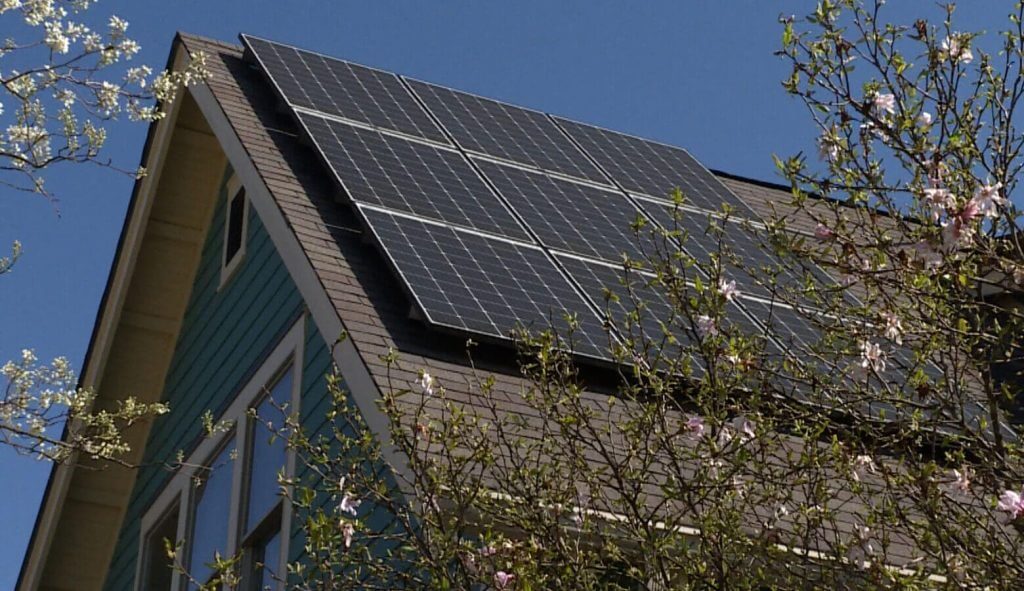
Drawbacks
- Less Financial Benefit: Leasing solar panels often results in less savings over the long term compared to owning a system outright because you’ll still be paying the leasing fees every month.
- Contract Length: Solar leases are long-term agreements, and getting out of them can be complicated if you decide to move or want to terminate the contract early.
- No Tax Incentives: As a lessee, you are not eligible for solar tax credits or incentives—these benefits go to the provider who owns the system.
Long-term Cost Implications and Potential Savings
When considering the financial aspect of solar lease agreements, it’s essential to look at the long-term cost implications and potential savings.
Monthly Savings: You should see immediate savings on your electricity bills. However, make sure to compare your current utility costs with the expected performance of the solar system and the lease payment.
Lease Payments: Over the course of the lease, your payments generally increase annually due to “escalator clauses” in the contract. This could potentially outweigh the savings if electricity prices do not rise as expected.
System Performance: Savings can also be affected by the performance of your solar panel system; if the panels aren’t producing as much power as anticipated, your savings could be lower.
Practical Advice for Indiana Homeowners
Before entering into a solar lease, conduct thorough research and potentially consult with a solar energy advisor. Consider these points:
- Analyze your current energy usage and costs.
- Review the full terms of the lease, including monthly payments, escalator clauses, maintenance responsibilities, and contract length.
- Understand what happens if you sell your property. Some agreements include a transfer clause, but potential buyers may not be keen to take over the lease.
- Always compare the costs and benefits of a lease to those of purchasing the system outright or choosing a solar loan.
A solar lease can make sense if you prefer lower upfront costs and are not concerned about maximizing long-term financial returns. However, the potential savings depend heavily on the specifics of the contract and the performance of the solar system.
Remember that owning the system might offer greater savings and benefits in the longer term, especially in Indiana where you could capitalize on net metering and other incentives if you purchase the system.
PPA Agreements
Power Purchase Agreements (PPAs) are a type of arrangement for acquiring solar energy in Indiana without having to buy a solar system outright. In a PPA, a solar service provider installs solar panels on a homeowner’s property at no initial cost. The homeowner then purchases the power generated by these panels, typically at a lower rate than the local utility’s price.
Pros of PPAs for Indiana homeowners
- No or low upfront costs: Installation is usually free or comes with a minimal fee, making solar power accessible without a large investment.
- Potential savings: Homeowners can save on their electric bills as PPAs often offer lower rates than traditional utilities.
- No maintenance worries: The solar service provider is responsible for maintenance and repairs, reducing the homeowner’s burden.
- Performance assurance: If the system underperforms, you’re only paying for the energy produced, and providers may have guarantees in place.
Cons of PPAs for Indiana homeowners
- Long-term commitment: PPAs typically last 15-25 years and can be complex to transfer if you decide to sell your home.
- Less savings long-term: While initially cheaper, rates may increase over time, and overall savings could be less than if you had bought the system outright.
- No ownership: At the end of the agreement, the homeowner doesn’t own the system unless a buyout option is exercised.
- Not eligible for incentives: Benefits like federal tax credits go to the system owner – the provider – not the homeowner.
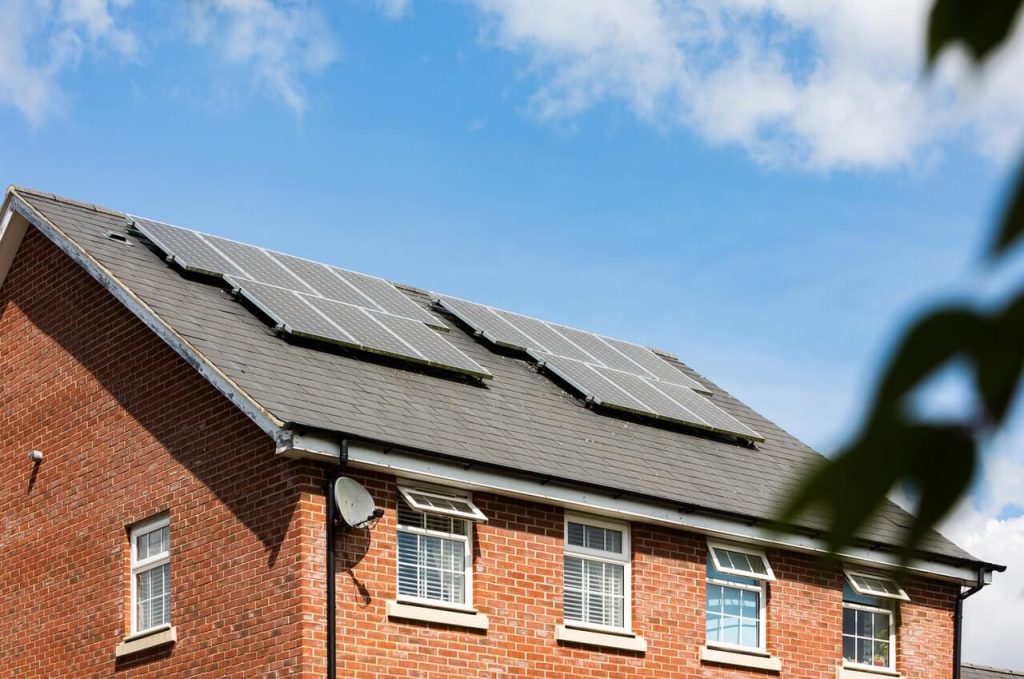
PPAs Compared to Buying or Leasing
Buying a solar system involves an upfront investment but offers the highest long-term savings and potential increase in property value. You own the system, claim any available tax credits and incentives, and have complete control over it.
Leasing is similar to a PPA in that there’s typically little to no upfront cost and the leasing company maintains the system. However, unlike a PPA, you pay a fixed lease payment regardless of the amount of energy the panels produce, which can sometimes surpass utility costs.
When considering solar energy options in Indiana, think about long-term goals, your current financial situation, and the commitment level you’re comfortable with. PPAs can offer an affordable entry into solar energy with less responsibility, while buying provides the greatest financial benefits over time. Leasing falls somewhere in between but with fixed costs. Assess each option’s merits and drawbacks carefully to choose the best path for your energy needs and economic circumstances.
Zero-down Solar Loans
Zero-down solar loans offer a way to switch to solar energy without the initial investment typically required to purchase solar panels outright. Essentially, you can have solar panels installed on your property with no upfront cost; instead, you repay the loan over an agreed period, similar to a mortgage or car loan.
Benefits of zero-down solar loans
- Immediate Savings: With no upfront costs, homeowners can begin saving on their electricity bills immediately, using those savings to pay off the loan.
- Favorable Loan Terms: These loans often come with competitive interests rates and terms that can be more manageable compared to other financing methods.
- Increased Home Value: Solar panels can increase property value. Homes with solar power tend to sell at a premium over homes without.
- Tax Incentives: Homeowners may still be eligible for federal tax credits and local incentives that can reduce the overall cost and accelerate the payback period of their solar investment.
- Energy Independence: Using solar power can protect you from rising utility rates and offer energy independence as you’ll be producing your own electricity.
Potential risks of zero-down solar loans
- Long-term Commitment: Solar loans typically involve long repayment terms. If the terms are not favorable, you might end up paying more over time than anticipated.
- Credit Implications: As with any loan, there is a credit risk. Failure to meet the payment obligations can affect your credit score.
- Interest Accumulation: While you save on utility bills, you must also keep in mind the interest adds to the overall cost of your solar system.
- Moving Complications: If you sell your home, you’ll have to pay off the loan in full or transfer the loan to the new homeowner, which could complicate the sales process.
- Performance Risk: You’re counting on the solar system to perform optimally. Any issues with performance can impact the financial benefits.
In Indiana, which may have less consistent sunlight than some sunnier states, it’s important to accurately assess your home’s solar potential and ensure a zero-down solar loan makes practical sense for your situation. Always compare loan offers, and carefully read terms and conditions.
Doing your homework and consulting with a solar energy expert could help you navigate this decision with confidence. Consider both short-term gains and long-term implications to ensure that a zero-down solar loan aligns with your financial and energy goals.
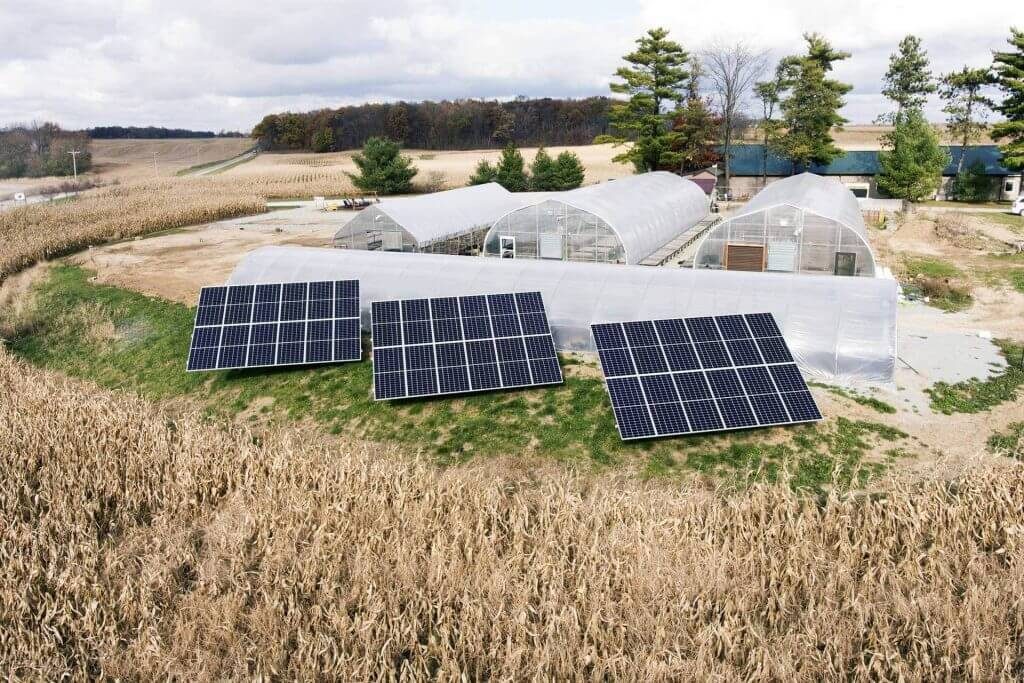
Can You Get Free Solar Panels From the Government?
The US government does not provide free solar panels outright. However, there are incentives and programs that significantly reduce the cost of solar panel installation, effectively making them more affordable for homeowners and businesses. In Indiana, while you may not get solar panels for free, you can take advantage of various initiatives that subsidize the cost.
One major federal initiative is the Solar Investment Tax Credit (ITC), which allows you to deduct a portion of your solar panel installation costs from your federal taxes. As of my knowledge cutoff date in early 2023, the ITC offers a 26% tax credit for systems installed through 2022, and this credit is set to reduce to 22% for systems installed in 2023. Keep in mind that tax credits and incentives may change, so it’s important to check the latest information.
Here are some steps and potential initiatives to look into if you’re interested in subsidized solar panels in Indiana:
Assess Your Eligibility
The federal ITC is available to all U.S. homeowners and businesses that install solar panel systems.
Additional state-level or local incentives may have specific eligibility criteria, such as income requirements or property location.
Research State and Local Incentives:
– Indiana may offer net metering which allows excess energy produced by your solar panels to be sold back to the grid, offsetting your electricity bills.
– Local incentives and rebates may also be available; these vary by region and utility company.
Apply for Incentives
To claim the federal ITC, you need to fill out IRS Form 5695 along with your tax return.
State and local incentives may require separate applications. You can consult with a solar installer or your local government to understand the process.
Seek Qualified Installers
Use certified solar installers who are familiar with Indiana’s solar incentives. They can guide you through the process and ensure you get the maximum rebates and credits.
Financing Options
Look into solar loans, solar leases, or power purchase agreements (PPAs) in Indiana as alternate ways to finance your solar installation.
While not free, these incentives can significantly reduce the net cost of solar panel installations, making solar energy a more attainable investment for Indiana residents. Always seek the latest information and advice from professional installers and tax advisors to maximize your benefits and ensure compliance with program requirements.
Indiana Solar Incentives, Tax Credits, and Rebates to Reduce the Upfront Cost
Solar incentives and rebates are designed to lower the financial barrier for homeowners in Indiana looking to install solar panel systems. These incentives can significantly reduce the upfront cost and enhance the long-term savings from using renewable energy.
Benefits can include direct rebates, tax exemptions, and performance-based incentives that credit you for the electricity your system produces. Federal tax credits can also offer substantial savings to reduce the cost of installation.
By taking advantage of these incentives, homeowners can lower their energy bills, increase their property value, and contribute to a cleaner environment.
Here’s a table outlining the key solar incentives available in Indiana:
| Incentive | Savings | Explanation | Type | Occurrence |
|---|---|---|---|---|
| Federal Solar Investment Tax Credit (ITC) | 26% of system costs | Allows you to deduct 26% of the cost of installing a solar energy system from your federal taxes with no cap on value. | Tax Credit | One-time (Decreases over time) |
| Property Tax Exemption | Varies | The added value of a solar system is exempt from property tax assessments, preventing an increase in property taxes. | Tax Exemption | Ongoing |
| Net Metering Policy | Varies by utility | You are credited on your bill for excess energy your system produces and returns to the grid. The rate is determined by the retail price of electricity. | Incentive Policy | Ongoing |
| Local Rebate Programs | Varies by locality | Some Indiana municipalities or utility companies offer rebates for solar installations. Check local programs for details. | Rebate | One-time |
Note: The specifics of these programs, particularly the local utility rebates and net metering policies, can vary. It’s important for residents to check with their local utility providers and stay updated with the current policies and incentives. The Federal Solar Investment Tax Credit is subject to change based on federal energy policies.
Will “Free” Solar Panels Save You Money?
First off, when we hear ‘free’ solar panels, it frequently refers to a solar lease or power purchase agreement (PPA). Here, a company installs solar panels on your home at no upfront cost. But here’s the catch: they still own the panels, and you pay for the power they produce, often at a lower rate than your utility.
The potential savings from these plans depend on several factors. Let’s break them down:
- Electricity Rates: The average electricity rate in Indiana is about 12 cents per kilowatt-hour (kWh). With solar, you might lock in a lower rate, shielding you from future rate hikes.
- Solar Irradiance: Indiana gets a good amount of sunshine—enough to make solar energy viable. Expect more savings in sunnier areas.
- Panel Efficiency: The technology provided by these ‘free’ panel companies is often quite good, harnessing significant energy even on less sunny days.
- Size of the System: The bigger the solar system, the greater the potential savings—since it could completely offset your electricity needs.
Now let’s contrast this with the traditional costs of electricity you would incur without solar panels. If you’re using grid electricity, not only are you subject to the current rates, but you’re also at the mercy of rate increases over time. Solar agreements generally offer fixed costs, providing a predictable electricity bill.
It’s important to read the fine print, though. Some solar leases come with escalator clauses that could increase your payments annually. Also, remember that while you avoid the upfront costs of buying panels, you also miss out on the financial benefits, like tax credits and increased home value.
In terms of financial viability, consider both short-term and long-term implications. Over time, ‘free’ solar panels usually lead to savings as utility prices rise. But owning your panels outright can lead to even more significant savings and benefits, albeit with a larger initial investment.
To quantify potential savings, conduct a detailed cost-benefit analysis and consider getting multiple quotes. Carefully examine both the lease/PPA terms and compare them with the cost of purchasing a system. Remember, the true cost includes more than just numbers on a bill—it’s about the value you get in the long run.
The Hidden Costs of “Free” Solar Panels
While the prospect of ‘free’ solar panels may sound incredibly appealing, it’s important to approach such offers with a healthy skepticism and to understand the potential hidden or unexpected costs they may entail.
- Lease/Power Purchase Agreements (PPAs): Many ‘free’ solar panel offers are not truly free; they often come with leases or PPAs. This means you don’t own the solar panel system, but rather agree to purchase the power it produces at a set price for a specified term, which is typically 20-25 years. While this can save on your electricity bills, it’s important to know that the leasing company often receives the state and federal tax credits and incentives for solar energy, not the homeowner.
- Maintenance and Repair Costs: If you don’t own the solar panels, the leasing company may cover maintenance and repair costs. However, this isn’t always the case, and it’s critical to clarify who is responsible for these costs over the life of the lease or PPA.
- Insurance: Additional insurance for the solar panel system might be required, either by the homeowner’s policy or by the solar provider, adding to your expenses.
- Escalation Clause: Some PPAs include an escalation clause that allows the price you pay per kilowatt-hour to increase annually. This can affect long-term savings and should be compared thoroughly with your current and projected utility rates.
- Home Sale Complications: Selling a home with leased solar panels can sometimes complicate the process, as potential buyers may be unwilling or unable to take over the lease or PPA agreement. Some buyers may even request that the system be removed or the lease be bought out before purchase.
Long-term financial implications are critical to consider. While leasing solar panels can lower your monthly electricity bill, it does not offer the same financial benefits as owning them outright. Solar panel ownership increases home value and provides the opportunity to benefit fully from tax credits and incentives; with leasing, these advantages often go to the leasing company instead. Before signing any agreement, it is wise to consult with a financial advisor or a solar energy expert to thoroughly understand the terms and how they align with your financial goals.
How to Choose The Best Solar Company in Indiana
Deciding to install solar panels in Indiana is a significant step toward sustainable living and energy independence. When you begin your search for the best solar installer, several crucial factors should be considered to ensure that your solar investment is secure and tailored to your specific needs. Here’s what you should keep an eye out for:
- Installer Experience and Certifications: Check the installer’s track record and expertise in the solar industry. Look for certifications from recognized entities such as the North American Board of Certified Energy Practitioners (NABCEP). Experienced installers can provide insights into the best practices for Indiana’s climate and ensure that your installation meets high quality and safety standards.
- Customer Reviews and Reputation: Research the installer’s reputation through customer reviews and testimonials. Positive feedback from previous customers regarding their reliability, professionalism, and the performance of installed systems can be a strong indicator of what to expect.
- Warranty Offerings: A solid warranty can protect your investment. Look for comprehensive warranties that cover equipment, workmanship, and performance. Longer warranties can give you peace of mind that any potential repairs or replacements will be handled without additional costs.
- Local Regulatory Knowledge: An installer who is well-versed in Indiana’s local regulations and incentive programs can guide you through the process seamlessly. They should be able to handle permits, understand the net metering policy, and help you maximize state and federal solar incentives.
- Climatic Considerations: Indiana’s climate can affect your solar system’s performance. The installer should be knowledgeable about local weather patterns to ensure your system is optimized for both the sunny summer and cloudy winter days, possibly including features like snow guards or specific tilt angles.
- Financial Options and Transparency: Trustworthy installers should offer transparent pricing and a variety of financing options, including leases, loans, and power purchase agreements (PPAs), allowing you to choose the best financial path for your situation.
- Post-Installation Support: After-sale services such as monitoring, maintenance, and customer support are crucial. Ensure that the company provides ongoing support and is responsive to any post-installation issues that may arise.
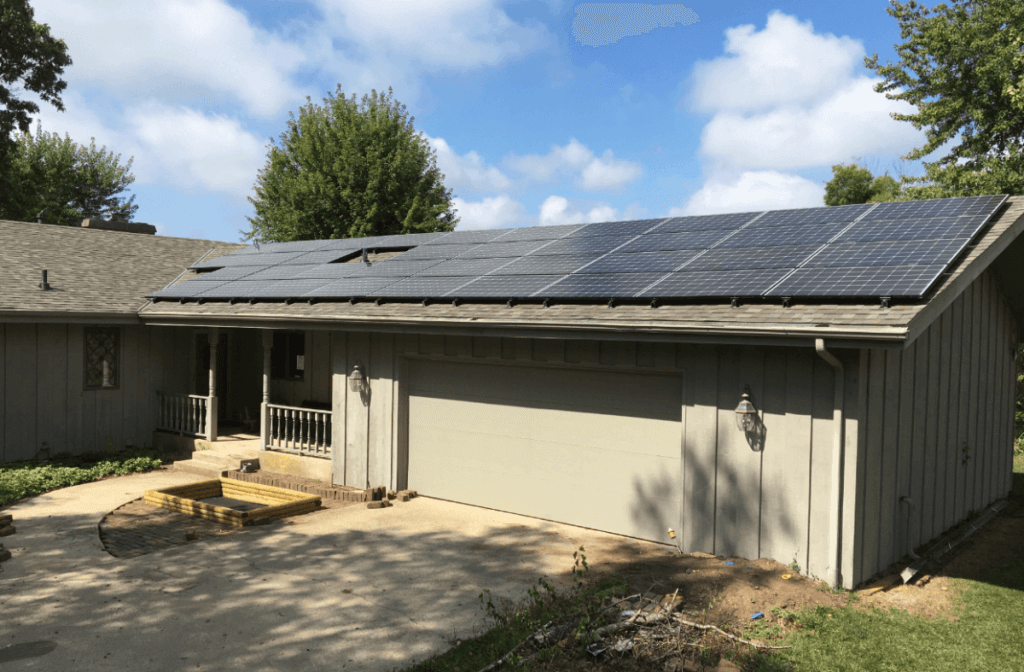
By considering these factors, you’ll be better equipped to find an Indiana solar installer that delivers quality service and helps you make the most of your solar investment. Remember, taking the time to choose the right partner for your solar journey is just as important as the decision to go solar itself.
Important Solar Installation Factors to Consider in Indiana
When considering the installation of solar panels in Indiana, there are several key factors to take into account to ensure that your investment is wisely made and fits your specific needs:
Climate Conditions
Indiana experiences four distinct seasons, with relatively cold winters and warm, humid summers. The good news is that solar panels operate efficiently in cold weather because they generate electricity from light, not heat. Snow, however, can temporarily reduce production if panels become covered, and shading from deciduous trees can also impact efficiency. It’s important to analyze your site’s sun exposure throughout the year to optimize panel placement and tilt angle.
State Regulations and Incentives
- Net Metering: Until recently, Indiana offered full retail net metering, allowing solar system owners to sell excess energy back to the grid at retail rates. This policy is phasing out, with reduced compensation for excess solar power generated. Understanding these changes and their implications on return on investment is critical.
- Local Codes and Permits: Be aware that installation requires compliance with local building codes and permits. Check with your local municipality to understand the specific requirements in your area.
- Financial Incentives: Indiana might offer state-specific incentives, tax credits, or rebates which can offset installation costs. Research the Database of State Incentives for Renewables & Efficiency (DSIRE) for up-to-date information on available programs.
Property Assessment
- Roof Evaluation: Assess your roof’s condition, age, and orientation. A south-facing roof is ideal in the Northern Hemisphere, but east and west-facing roofs can also be suitable. Additionally, ensure your roof can support the weight of the solar panels and that it won’t need replacing in the near future.
- Energy Efficiency: Prior to installation, consider improving your home’s energy efficiency. This can reduce the size of the solar system needed to meet your energy demands, thereby saving on upfront costs. Simple upgrades like LED lighting, energy-efficient appliances, and added insulation can make a significant difference.
In your journey to adopting solar power, it is also beneficial to consult with a professional solar installer who is familiar with the specific considerations of Indiana’s climate and regulations. They can conduct a detailed assessment and help you navigate the complexities of installation, permitting, and incentives, making going solar a seamless and rewarding process.
In a Nutshell: Can You Get Free Solar Panels in Indiana?
When considering ‘free’ solar panels in Indiana, there are a few key points homeowners should keep in mind:
Realities:
- ‘Free’ solar panels typically involve a solar lease or Power Purchase Agreement (PPA), where the homeowner does not own the panels; instead, a third-party company does.
- The company installs the panels at no upfront cost to the homeowner, who then pays for the electricity generated, often at a lower rate than the utility company.
- Homeowners do not get the financial incentives such as federal tax credits since they do not own the system.
Benefits:
- Immediate savings on electricity bills with no initial investment.
- Protection from rising energy costs as the solar rate under a lease or PPA can be fixed.
- No worry about maintenance or repairs as these are typically covered by the solar provider.
Considerations:
Solar lease or PPA contracts are long-term, commonly spanning 20-25 years, which could complicate selling the home.
Savings are less than if the homeowner purchased the system outright due to ongoing payments.
It is crucial to thoroughly read and understand the agreement terms, such as escalator clauses which can increase the cost of electricity from the panels over time.
When contemplating solar for your home in Indiana, consider both the immediate and long-term implications. Weigh the appeal of no upfront costs against the benefits of full system ownership, and decide what best aligns with your financial goals and energy needs.


